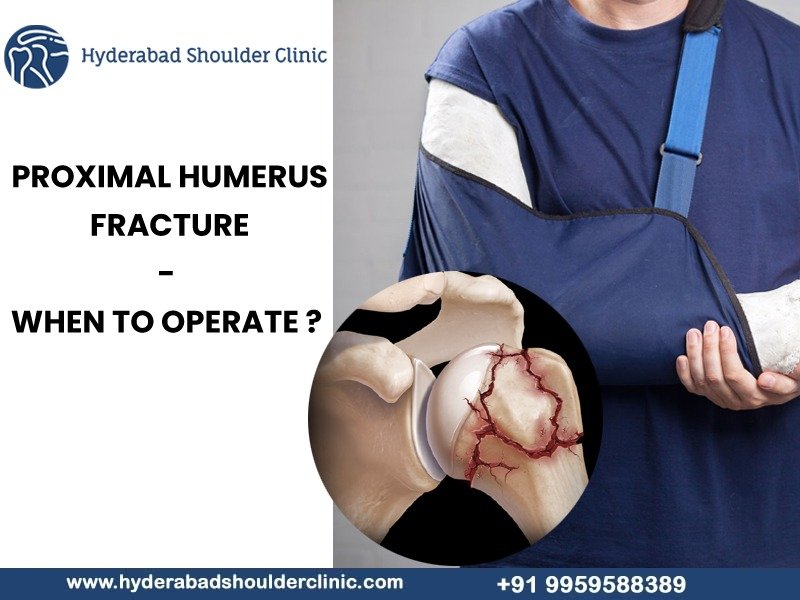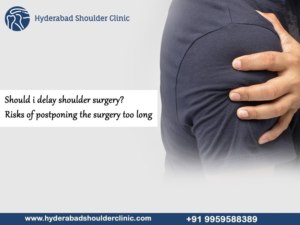The humerus is one of the longest bones of the body, present in the arm between the shoulder and the elbow. Due to a fall or an accident, two types of humerus fractures can occur. The classification is based on the location of the break(s).
The treatment of a proximal humerus fracture is determined by the type and severity of the fracture. The most common treatment suggested by experienced shoulder surgeons like Dr. Chandra Sekhar B includes the use of a brace, sling, splint, or cast and/or surgery.
What is a proximal humerus fracture?
The two types of humerus fractures are:
Proximal humerus fracture: A proximal humerus fracture means that the site of fracture is closer to the shoulder joint. There are two levels of the Proximal humerus fracture based on the location at different levels with different fracture patterns:
- Simple
- Comminuted.
Humerus shaft fracture: This type of fracture occurs at the mid portion of the upper arm.
Causes and symptoms of a proximal humerus fracture
The most common cause of approximate fracture is a fall on the outstretched arm. This could be in a car crash or any other similar type of accident.
The symptoms of a proximal humerus fracture are similar to those of any fracture, which include:
- Severe pain, which keeps on increasing.
- At the side of the fracture, there is swelling and bruising.
- The patient cannot move the shoulder following the fracture
- Whenever the patient tries to move the shoulder, there is a grinding sensation. Sometimes, a grinding sound can also be heard.
- Deformity, which means the shoulder does not look right.
- In case of an open fracture, the patient also sees occasional bleeding.
- Inability to use the arms normally, which happens if there is a nervous injury or bone fracture.
What is the treatment for a proximal humerus fracture?
Following the fracture, if the bone fragments do not shift out of position, the fracture can be treated without surgery. In cases where the bone has broken into multiple fragments and has also dislocated, surgery is often performed. Surgery allows for earlier mobility, and experienced surgeons like Dr Chandra Sekhar B will consider other factors when deciding between surgical fixation or nonoperative treatment.
In conservative treatment, the patient is required to wear wrestling or a shoulder immobilizer for two weeks to arrest the shoulder movement. After the sling is removed, they have to do exercises that will slowly increase the shoulder’s range of motion.
Proximal humerus fractures went to operate?
Though conservative treatment is preferred, there are certain special cases where surgery is required in order to fix the Proximal humerus fractures, such as:
- Surgery is recommended to fix the broken humerus when it is broken into multiple fragments and the fragments have dislocated from their original positions.
- Following the fracture, if the bone has stuck out through the skin, it is called an open fracture, in which case the patient will be bleeding.
- If the fracture has resulted in the damage of nerves or blood vessels, then surgery is required so that the patient can use their arm normally.
- Surgery will reduce pain and help the patient get back to their normal life sooner.
- To help the patient maintain their shoulder strength and range of motion.
- Children are more susceptible to these fractures because of their very active lives and involvement in various sporting activities. If the fracture has occurred around the growth plate, surgery is required to keep the bone in the correct position so it grows correctly.
Proximal humerus fracture surgery
During the surgery, plates and screws are used depending on the type of injury. The whole surgery takes 1 to 2 hours, and in most cases, it is done on an outpatient basis, and the patient can be discharged on the same day. Patients can go for a second opinion, in case the surgeon recommends an operation. To hold the bone in position during the healing period, thin pins or wires are used, which are later removed once the shoulder heals completely.
Why is proximal humerus fracture operation important?
Some patients are weary of an operation and try to avoid it, but it is good to know the complications that could arise without surgery. The main complication is that the broken humerus can develop a nonunion or a malunion.
- A nonunion means that even after six months, the bone did not heal. By that time, the patient would have developed other complications, such as infections and increased pain. At this stage, surgery might become inevitable.
- A malunion is a condition in which the bone has healed, but the position is incorrect, resulting in a visible deformity and restricting arm movement.
In either of these conditions, surgery is required to restore the proper function of the arm and reduce pain. Joint replacement gives excellent pain relief and restores motion.
A word from the Hyderabad shoulder clinic
We at Hyderabad Shoulder Clinic have decades of experience in treating proximal humerus fractures. After surgery, most patients do well, and within 6 months, they are extremely comfortable. After three months, they are allowed to do their activities provided they follow all the post-operative directions regularly and sincerely. Be careful when returning to normal activity because too early involvement in regular life can result in re-fracture, hardware breakage, or nonunion.
For more information, please visit our website https://hyderabadshoulderclinic.com/ or contact us at +91 9959588389 or shoulderandsportsclinic@gmail.com.





